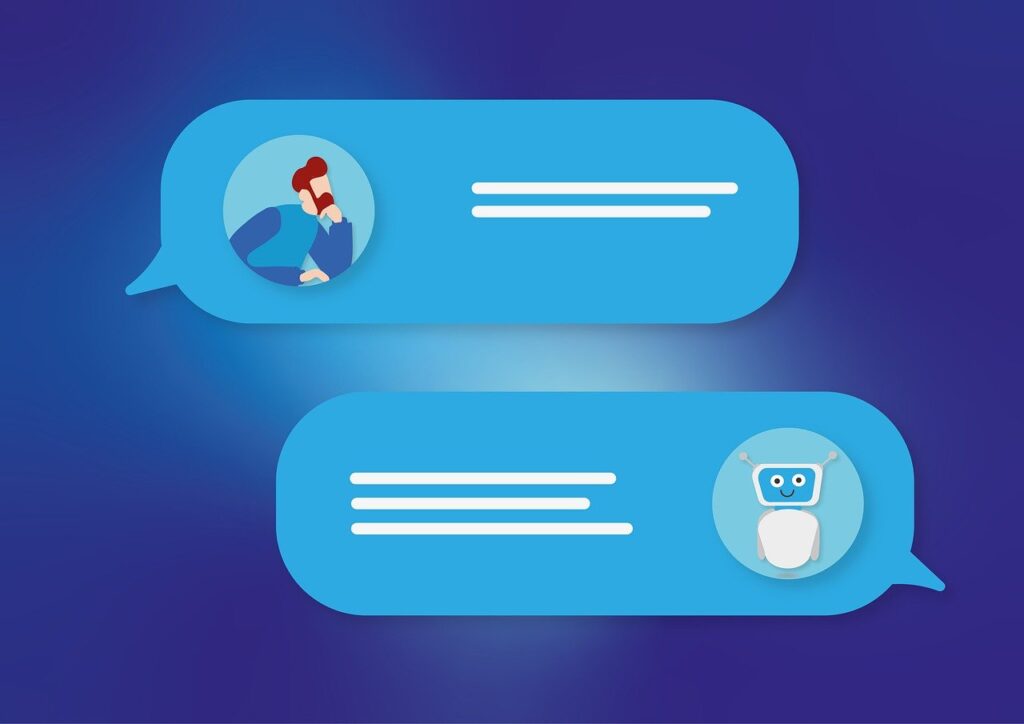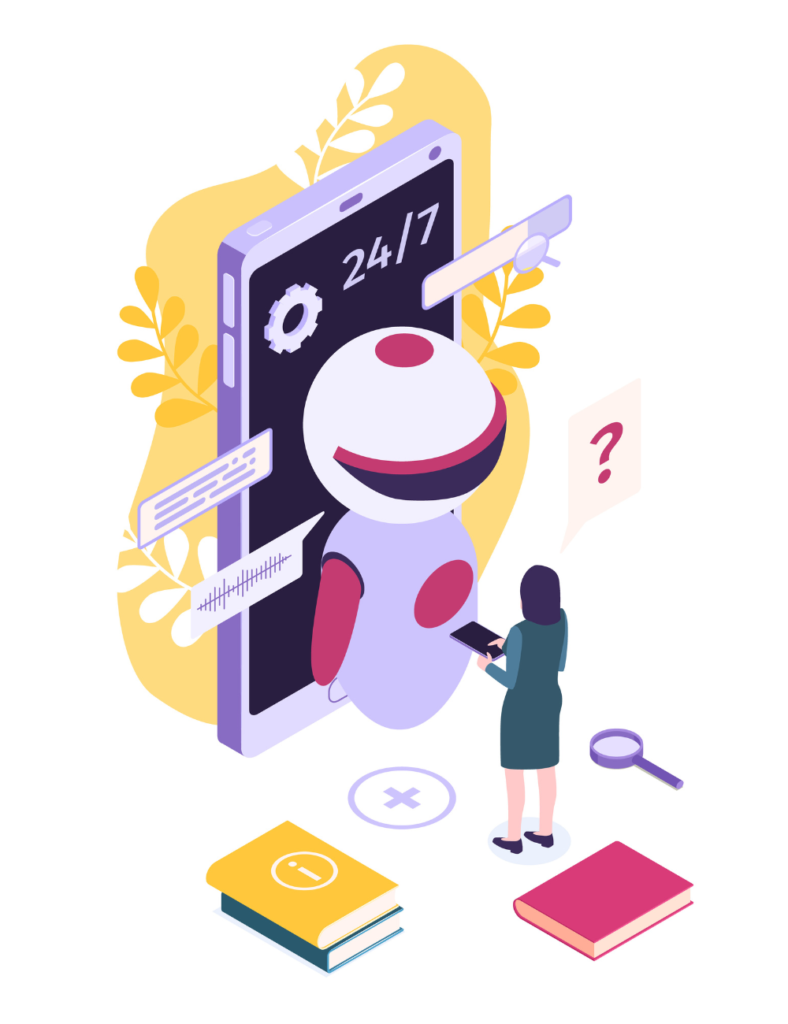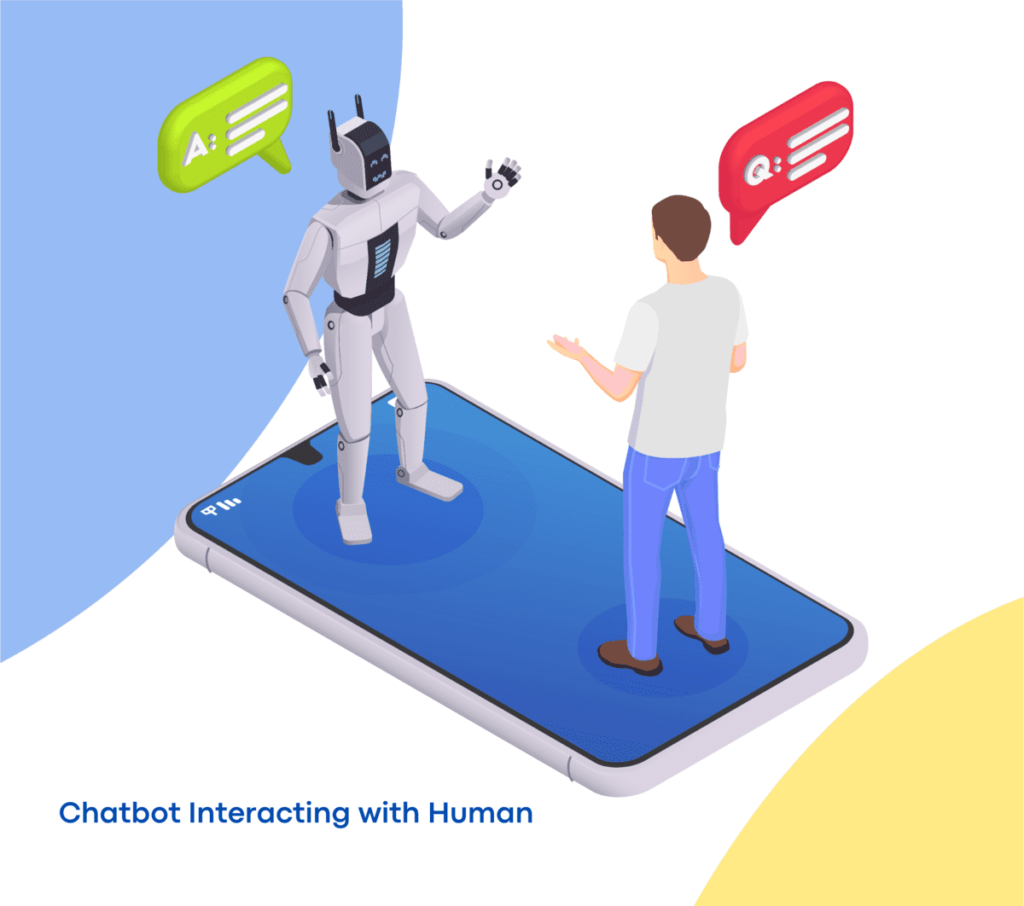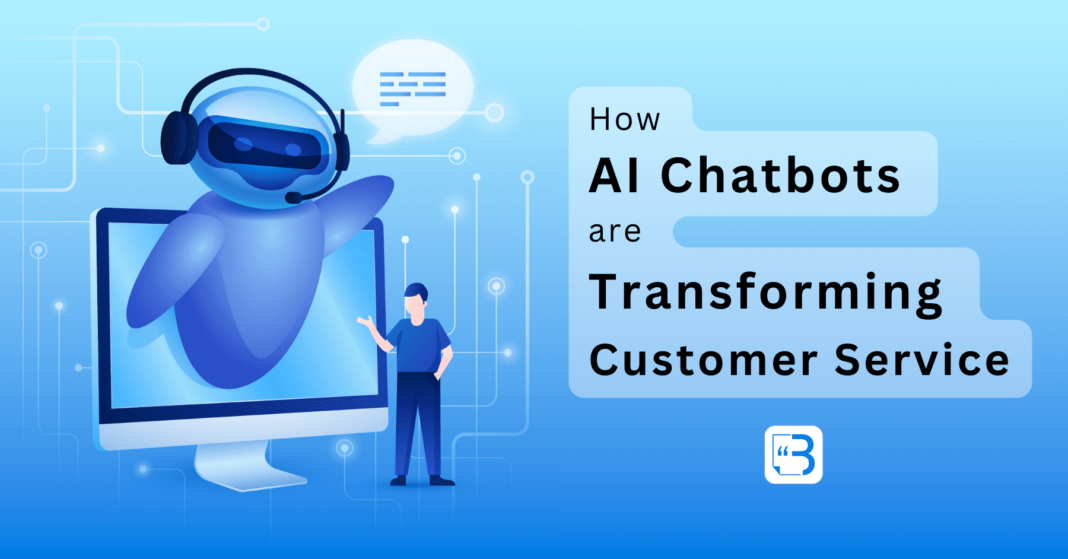Introduction
In today’s digital age, the way businesses interact with customers is evolving rapidly, and at the forefront of this revolution, AI Chatbots are Transforming Customer Service. From simple text-based interfaces to sophisticated virtual assistants capable of understanding and responding in natural language, AI chatbots are redefining the traditional customer service paradigm.
Whether it’s 24/7 availability, personalized responses, or seamless integration with existing systems, AI chatbots have proven to be more than just a technological innovation; they are a strategic tool that enhances customer satisfaction and drives growth.
This comprehensive guide explores how AI Chatbots are Transforming Customer Service across various industries, from retail and healthcare to finance. We’ll delve into their historical development, examine real-world applications, and look ahead to future trends and challenges.
Join us as we embark on a fascinating journey to understand how this technology is not just shaping businesses but creating a more responsive, personalized, and human-centric customer experience.
Table of Contents
Section 1: What are AI Chatbots?
AI chatbots are increasingly playing a pivotal role in customer service, but what exactly are they, and how did they come to be? Let’s break down their definition, historical development, and the types of chatbots currently in use.
Definition and Background
Introduction to AI and Chatbots
AI chatbots are intelligent virtual assistants designed to simulate human conversations. They leverage the power of Artificial Intelligence (AI) and Natural Language Processing (NLP) to understand, interpret, and respond to user queries. AI allows these chatbots to learn from previous interactions and continuously improve their performance.
Historical Development
The concept of chatbots dates back to the 1960s with the creation of “ELIZA,” one of the first-ever computer programs designed to mimic human conversation. However, the evolution of AI and machine learning has significantly advanced the capabilities of modern chatbots. What started as a simple rule-based system has transformed into sophisticated AI-driven bots that provide personalized and context-aware responses.

Types of Chatbots
Rule-based Chatbots
These chatbots operate on a predefined set of rules. They follow a strict script and can only respond to specific inputs. While they are useful for handling basic queries, their lack of flexibility means they cannot handle complex or unexpected questions.
Machine Learning Chatbots
Unlike rule-based bots, machine-learning chatbots learn and adapt over time. They utilize algorithms and data to understand the context and nuances of human language. These bots can handle more complicated queries, offering personalized responses and growing smarter with each interaction.
Hybrid Systems
Hybrid chatbots combine the best of both worlds, integrating rule-based and machine-learning elements. They follow predefined rules for straightforward questions but switch to machine learning for more complex inquiries. This flexibility makes them highly adaptable and capable of delivering more accurate and contextualized support.
Section 2: Why are AI Chatbots Important in Customer Service?
The integration of AI chatbots into customer service isn’t merely a technological advancement; it’s a strategic alignment with the dynamic needs of the modern customer. In this section, we’ll delve into why AI chatbots have become indispensable in customer service, focusing on their 24/7 availability, cost efficiency, and personalization capabilities.
24/7 Availability
Round-the-Clock Support
In our connected world, customers expect immediate answers, regardless of time zones or business hours. AI chatbots fulfill this expectation by providing round-the-clock support. They can instantly respond to inquiries, handle requests, and solve problems at any time of the day or night.
Global Reach
The ubiquitous nature of AI chatbots means they can serve customers from all corners of the globe. Language barriers and geographical restrictions are no longer obstacles, allowing businesses to expand their reach and cater to a diverse and global customer base.
Cost Efficiency
Automation and Scalability
AI chatbots enable businesses to automate repetitive and mundane tasks, freeing up human agents to focus on more complex and value-added activities. Plus, chatbots can handle multiple queries simultaneously, scaling up or down based on demand. This scalability ensures that businesses can maintain consistent customer support without significant increases in cost.
Reducing Human Workload
Human agents can only handle so much, and hiring additional staff increases expenses. AI chatbots fill this gap by taking on a substantial portion of the customer interaction workload. They handle routine inquiries efficiently, allowing human agents to concentrate on more nuanced and intricate issues, thus optimizing the use of human resources.
Personalization
Tailoring Responses
One of the standout features of AI chatbots is their ability to provide personalized responses. By analyzing customer data and previous interactions, they can tailor their replies to individual preferences and needs. This personalized approach enhances the customer experience, fostering loyalty and satisfaction.
Understanding User Behavior
AI chatbots are not just reactive; they are also insightful. They can analyze user behavior, detect patterns, and provide insights that help businesses understand their customers better. This understanding leads to more targeted marketing, product development, and overall strategy alignment with customer wants and needs.

Section 3: How AI Chatbots Work
The magic of AI chatbots in customer service isn’t just in what they do, but how they do it. This technology’s ability to engage in meaningful conversations and adapt to individual user needs lies in some sophisticated processes and integrations. Let’s explore the nuts and bolts of how AI chatbots work, focusing on Natural Language Processing (NLP), Machine Learning, and integration with existing systems.
Natural Language Processing (NLP)
Understanding Human Language
AI chatbots leverage NLP to understand and interpret human language. This complex process involves breaking down sentences into words and phrases, analyzing grammar, and determining context. By doing so, chatbots can grasp the user’s intent and respond appropriately.
Conversation Flow
Maintaining a natural and smooth conversation flow is another critical aspect of NLP. AI chatbots must understand the conversation’s context, remember previous interactions, and ensure that responses are coherent and relevant. This capability enables chatbots to engage in dialogues that feel less robotic and more human-like.
Machine Learning and Adaptation
Learning from Interactions
AI chatbots don’t just follow a script; they learn and evolve. Through machine learning algorithms, they analyze past interactions and customer feedback to continuously refine their responses. This learning process enables chatbots to offer more accurate and personalized support over time.
Continuous Improvement
The capacity for continuous improvement sets AI chatbots apart from static rule-based systems. By regularly updating their knowledge base and adapting to new information and trends, AI chatbots ensure that they stay relevant and effective. This adaptability is essential in a constantly changing business environment.
Integration with Existing Systems
AI chatbots are not standalone entities but vital parts of an interconnected digital ecosystem. Their true potential is unlocked when seamlessly integrated with various existing systems within an organization.
CRM Systems
Chatbots can be linked to Customer Relationship Management (CRM) systems, enabling them to access customer profiles, purchase history, and preferences. This integration allows for more personalized interactions and can help in identifying upsell or cross-sell opportunities.
Database Access
By integrating with organizational databases, chatbots can retrieve real-time information such as product availability, pricing, or order status. This ensures accurate and timely responses, enhancing customer satisfaction.
E-commerce Platforms
Chatbots can be integrated with e-commerce platforms to provide immediate assistance with product inquiries, shopping recommendations, and checkout processes. This adds a layer of convenience for online shoppers and can increase conversion rates.
Helpdesk Software
AI chatbots can be linked with helpdesk software to provide immediate support for common queries and issues. They can generate tickets, guide users through troubleshooting steps, or escalate matters to human agents when necessary. This integration enhances efficiency and ensures a smooth support experience for customers.
The integration of AI chatbots with these existing systems illustrates their versatility and ability to act as a cohesive part of the broader business infrastructure. Whether it’s sales, support, or user engagement, these integrations enable chatbots to provide value across various facets of customer interaction, truly showcasing how AI Chatbots are Transforming Customer Service.

Section 4: Case Studies of AI Chatbots in Action
Understanding the theory behind AI chatbots is essential, but witnessing their real-world applications brings the concept to life. Various industries have embraced AI chatbots to redefine their customer interactions. Here are some real-world case studies that showcase the transformational impact of AI chatbots in the retail, healthcare, and finance sectors.
Retail Industry
Sales and Support
AI chatbots have found a solid foothold in the retail industry. These digital assistants help customers with product recommendations based on preferences, respond to queries about product availability and shipping, and offer post-sale support.
Example: Sephora
Sephora, a leading cosmetics brand, introduced a chatbot on its platform to enhance user experience. This bot assists visitors in navigating the extensive product catalog, offering personalized makeup suggestions based on user preferences and past purchases. Since its launch, Sephora has seen improved customer engagement and a noticeable boost in online sales.
Healthcare Sector
Appointment Scheduling
Healthcare institutions are integrating AI chatbots to simplify administrative tasks like appointment scheduling. These chatbots communicate with patients, offer available time slots based on doctor availability, and confirm appointments, ensuring smooth coordination with existing scheduling systems.
Example: Mayo Clinic
Mayo Clinic, a prominent healthcare institution, implemented a chatbot to handle appointment bookings and general patient inquiries. The bot seamlessly syncs with the hospital’s scheduling system, providing real-time appointment slots and managing rescheduling requests. This has streamlined the entire process, reducing the manual administrative workload and enhancing patient satisfaction.
Finance and Banking
Automated Assistance
Modern banking is embracing AI chatbots to provide swift and automated support for various services. These bots handle queries like account balance checks, transaction histories, and even investment advice, ensuring the security and convenience that customers expect from digital banking.
Example: Bank of America
Bank of America introduced Erica, an AI-driven virtual assistant, to its online banking platform. Erica assists customers with account queries, bill payments, and even provides financial advice based on user behavior. Its seamless integration ensures that users receive personalized, secure, and efficient service. Following Erica’s introduction, Bank of America reported improved customer engagement and a decrease in routine call center inquiries.
Travel and Hospitality Industry
Booking and Reservations
Chatbots in this industry facilitate hassle-free booking of flights, hotels, and transportation services. They can also provide information about travel destinations, local attractions, and weather conditions.
Example: Expedia’s Travel Chatbot
Expedia‘s chatbot, available on platforms like Facebook Messenger, assists travelers in booking flights, hotels, and car rentals. It uses intuitive questions to understand user preferences and offers personalized suggestions based on past bookings and current deals. This seamless interaction mimics a conversation with a travel agent, enhancing the overall booking experience.
Education Sector
Student Support and Engagement
Educational institutions are using chatbots to provide information about courses, admissions, and campus facilities. They also engage students with interactive learning and assist in administrative tasks.
Example: Georgia State University’s Pounce
Pounce, Georgia State University‘s AI-powered chatbot supports prospective and current students by answering queries related to admissions, financial aid, course selection, and more. Named after the university’s mascot, Pounce interacts with students via text messages, reducing administrative bottlenecks and providing timely, personalized support. It played a significant role in increasing enrollment and student satisfaction.
Government Services
Public Information and Assistance
Governments are implementing AI chatbots to provide citizens with information about policies, services, and public programs. They can assist with processes like tax filing, license renewals, and accessing public records.
Example: Singapore’s Ask Jamie
Ask Jamie is a virtual assistant implemented by the Singaporean government to facilitate access to public services and information. Whether citizens are looking for details on tax filing, healthcare benefits, or legal procedures, Ask Jamie guides them through government websites and provides concise answers. By making public information more accessible, it improves the efficiency and transparency of government services.
These real-world examples showcase how AI chatbots are addressing unique challenges within different sectors. From enhancing the travel booking process with Expedia to guiding students through the complex administrative landscape with Pounce, and making government services more accessible with Ask Jamie, AI Chatbots are Transforming Customer Service in ways that are innovative, personalized, and user-centric. Their applications are a testament to the potential and adaptability of AI technology in meeting diverse needs and expectations.

Section 5: The Future of AI Chatbots in Customer Service
The rise of AI chatbots in customer service is more than a fleeting trend; it’s a sign of an unfolding future where technology and human interaction merge in new and exciting ways. In this section, we’ll explore the emerging technologies that are shaping the future of AI chatbots, delve into the ethical considerations that accompany their growth, and make predictions about where this transformative technology is headed.
Emerging Technologies
Voice-enabled Chatbots
Voice technology is rapidly advancing, and with it, voice-enabled chatbots are becoming more sophisticated. These chatbots allow users to engage in natural, spoken conversations, making interactions more intuitive and accessible. From handling customer inquiries to facilitating purchases, voice-enabled chatbots are set to redefine how businesses connect with their audiences.
Virtual Reality Support
Another promising frontier is the integration of AI chatbots with virtual reality (VR). This combination will allow customers to immerse themselves in a virtual store, interact with products, and seek assistance from AI-powered virtual sales representatives. This convergence of VR and AI opens up unparalleled opportunities for interactive and engaging customer experiences.
Ethical Considerations
Privacy Concerns
As AI chatbots become more adept at personalization, the need for handling personal and sensitive data increases. Ensuring the privacy and security of this information is paramount. Businesses must be transparent about data usage, comply with privacy regulations, and implement robust security measures to maintain customer trust.
Bias in Algorithms
AI chatbots learn from data, and this data can sometimes reflect societal biases. Ensuring that algorithms are free from bias and that chatbots treat all users fairly and equally is a significant ethical consideration. Ongoing monitoring and careful selection of training data can help mitigate these concerns.
Future Predictions
Integrating AI Chatbots with IoT
The Internet of Things (IoT) is growing exponentially, and the integration of AI chatbots with IoT devices is a likely future development. Imagine a chatbot on your smart refrigerator suggesting recipes based on its contents or a virtual assistant on your smartwatch booking doctor appointments. The synergy between AI chatbots and IoT will create a more connected and convenient world.
Human-bot Collaboration
The future of customer service is not about replacing humans with bots but enhancing human capabilities through collaboration. AI chatbots can handle routine queries, while human agents tackle more complex issues, all working seamlessly together. This human-bot collaboration will lead to more efficient and personalized customer service, enriching the overall customer experience.
Conclusion
The journey of AI chatbots from simple rule-based systems to complex, learning-driven engines has been nothing short of remarkable. As we’ve explored in this comprehensive overview, AI chatbots are no longer just a technological novelty; they are a transformative force that’s reshaping the way businesses connect with their customers.
Through examples from various industries such as retail, healthcare, and finance, we’ve seen how these intelligent virtual assistants are enhancing sales, streamlining administrative tasks, and providing personalized financial assistance. Whether it’s Sephora’s makeup suggestions, Mayo Clinic’s efficient appointment scheduling, or Bank of America’s virtual assistant Erica, the real-world applications are vast and growing.
Emerging technologies such as voice-enabled chatbots and virtual reality support are pushing the boundaries of customer interaction, opening doors to more intuitive and immersive experiences. However, these advances don’t come without challenges. Ethical considerations surrounding privacy and bias must be addressed responsibly to ensure a future where AI is both beneficial and just.
As we look forward to a future where AI chatbots are integrated with the Internet of Things and human-bot collaboration becomes a norm, the potential for innovation and enhancement in customer service seems limitless.
What started as a fascination with automation and artificial intelligence has evolved into a critical tool for modern businesses. AI chatbots are not just a trend; they are a testament to human ingenuity and a preview of a more connected, personalized, and efficient world.
In the end, AI chatbots symbolize more than technological advancement; they represent a new era of customer service where technology and human connection coalesce. By embracing this technology thoughtfully and creatively, businesses can pave the way for a future that is not only technologically advanced but also rich in empathy, understanding, and human touch.




